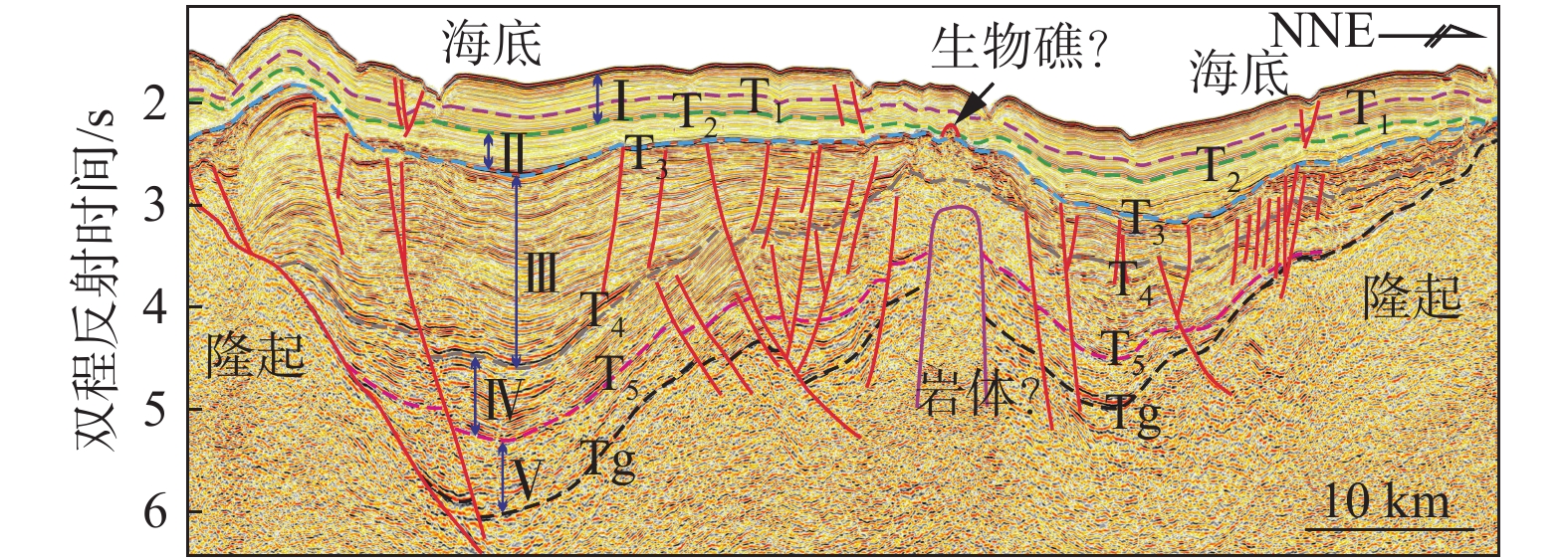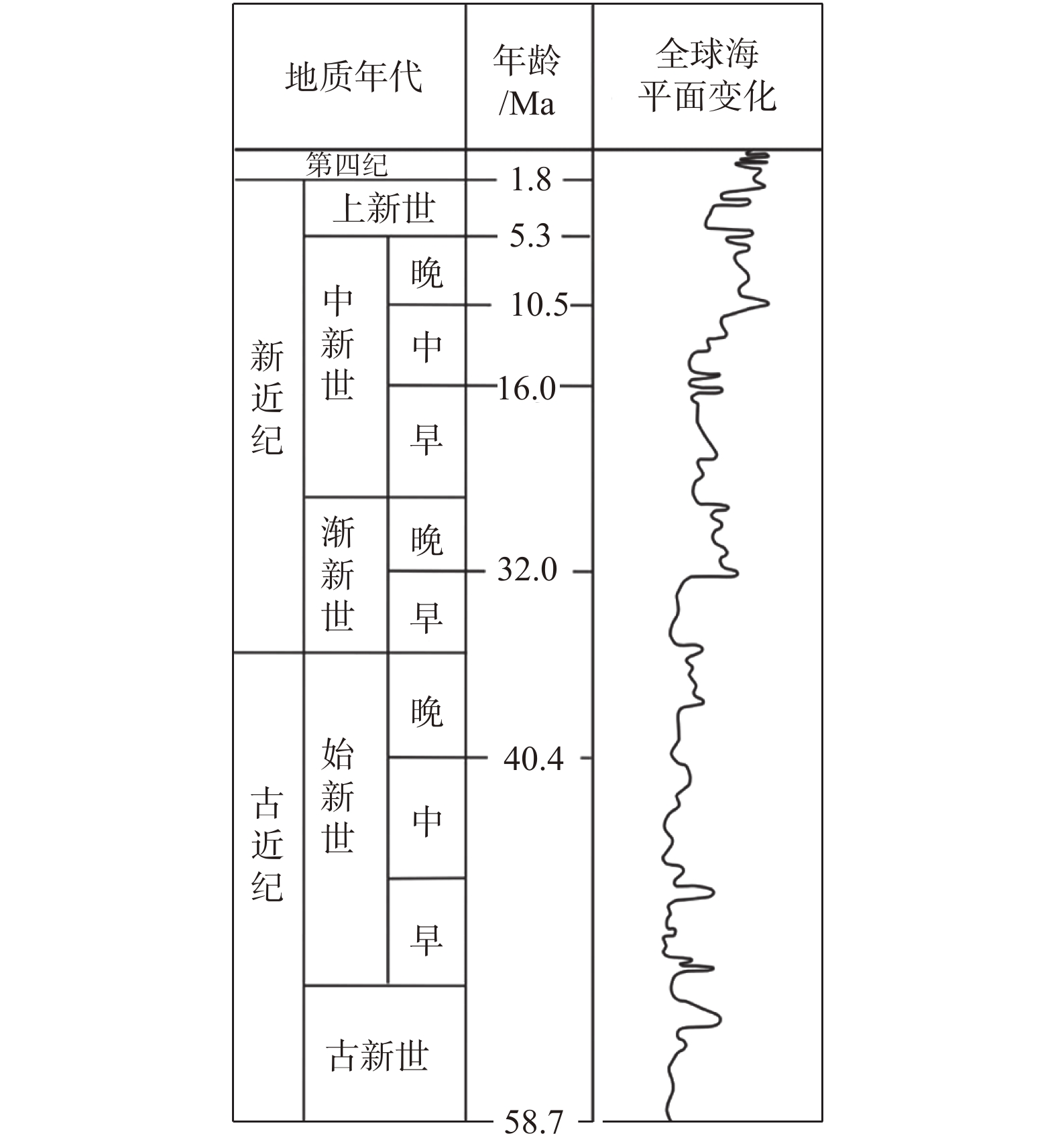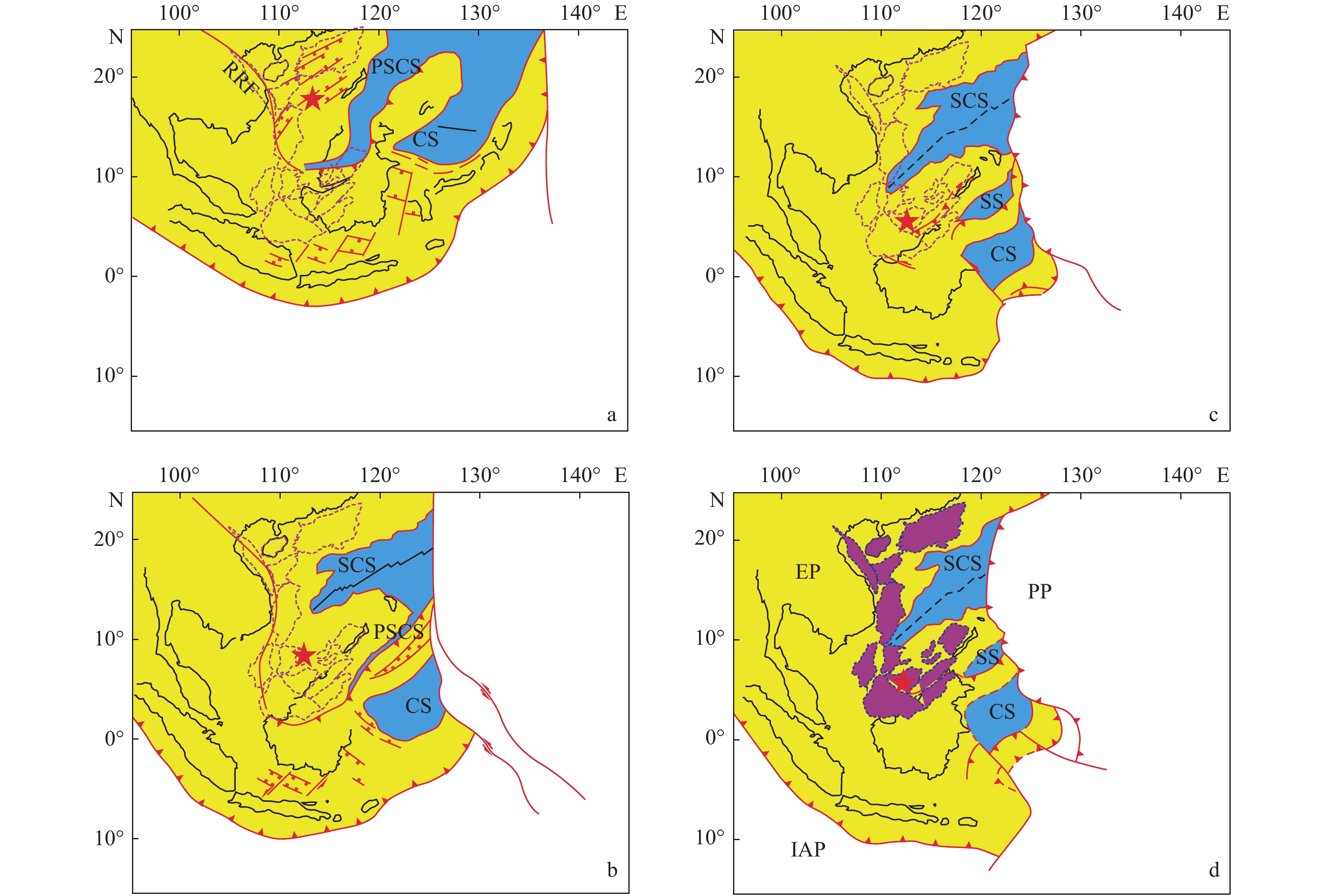AGE DATING OF MAIN GEOLOGICAL INTERFACES AND ITS SIGNIFICANCE IN OIL AND GAS GEOLOGY IN BEIKANG BASIN
-
摘要:
基于高分辨率二维地震资料,结合区域构造背景,开展了南海西南部北康盆地主要不整合界面及特征识别、年代重新厘定以及油气地质意义分析等工作。研究结果表明,北康盆地新生代发育6个区域性不整合界面,分别对应于礼乐运动、西卫运动、南海运动、南沙运动、万安运动和广雅运动。其中,T3不整合是后南海扩张期的分界,对应于南沙运动及南海西南次海盆的扩张终止。Mulu-1井井震对比显示,T3对应于中中新世不整合面(MMU),时代为16 Ma。该界面总体表现为强振幅、下部地层强烈削蚀、界面起伏大,上下地层结构、产状、地震反射特征发生突变,是构造变形前后两大套地层的分界面,对局部圈闭形成及油气成藏具有重要意义。
Abstract:Using the high-resolution 2D seismic data currently acquired and upon the basis of the regional tectonic background, the comprehensive seismic data interpretation for the Beikang Basin is carried out. Main unconformity interfaces are identified, stratigraphic age redetermined, and their geological significance to oil and gas geology discussed. The results suggest that there are six unconformities in the region respectively corresponding to the Liyue movement, Xiwei movement, South China Sea movement, Nansha movement, Wan'an movement and Guangya movement. Among them, the T3 unconformity is the boundary of the post-spreading period of the South China Sea caused by the Nansha movement, marking the cessation of the South China Sea spreading. Well-seismic correlation of Well Mulu-1 shows that the unconformity surface (T3) corresponds to the Middle Miocene unconformity surface (MMU) of 16 Ma characterized by high amplitude, strong erosion and large undulation. Abrupt changes in stratigraphic structure, occurrence, and seismic reflection characteristics occur above and below the interface. It is the boundary face between the deformed and undeformed strata, and bears great significance to local structures and hydrocarbon accumulation.
-

-
图 2 北康盆地主要地震不整合面(剖面位置见图1所示)
Figure 2.
图 4 Mulu-1过井地震剖面图(井位及剖面位置见图1)
Figure 4.
表 1 北康盆地地震反射界面和层序划分表
Table 1. Seismic reflection interfaces and sequence division in the Beikang Basin
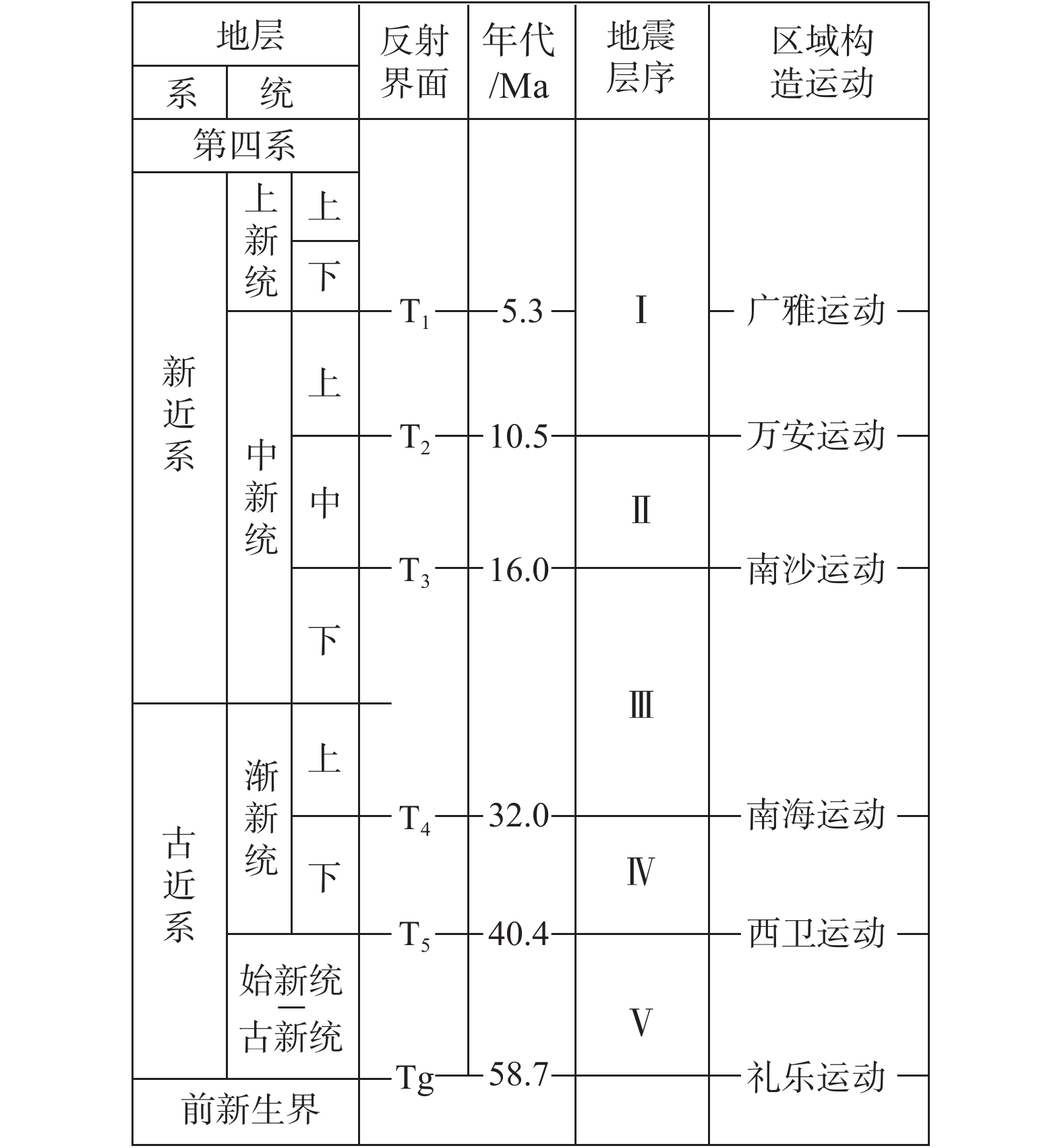
-
[1] Barckhausen U,Engels M,Franke D,et al. Evolution of the South China Sea:revised ages for breakup and seafloor spreading[J]. Marine and Petroleum Geology,2014,58:599-611. doi: 10.1016/j.marpetgeo.2014.02.022
[2] 王星星,蔡 峰,吴能友,等. 南海东北陆坡新生代构造区带划分新认识[J]. 海洋地质前沿,2020,36(2):70-72.
[3] 孙 珍,赵中贤,周 蒂,等. 南沙海域盆地的地层系统与沉积结构[J]. 地球科学(中国地质大学学报),2011,36(5):798-806.
[4] 何家雄,李福元,王后金,等. 南海北部大陆边缘深水盆地成因机制与油气资源效应[J]. 海洋地质前沿,2020,36(3):1-11.
[5] 万 玲,姚伯初,曾维军,等. 南海岩石圈结构与油气资源分布[J]. 中国地质,2006,33(4):874-884.
[6] 张功成,屈红军,张凤廉,等. 全球深水油气重大新发现及启示[J]. 石油学报,2019,40(1):1-34.
[7] 张 莉,王嘹亮,易 海. 北康盆地的形成与演化[J]. 中国海上油气,2003,17(4):245-248.
[8] 王嘹亮,梁金强,曾繁彩. 北康盆地新生代沉积特征[J]. 南海地质研究,2000(12):58-72.
[9] 王宏斌,姚伯初,梁金强,等. 北康盆地构造特征及其构造区划[J]. 海洋地质与第四纪地质,2001,21(2):49-54.
[10] 鄢 伟,张光学,张 莉,等. 南海南部陆缘地质流体类型及其油气成藏意义[J]. 中国地质,2018,45(1):39-47.
[11] 雷振宇,张 莉,苏 明,等. 南海南部北康盆地中中新世深水沉积体类型、特征及意义[J]. 海洋地质与第四纪地质,2017,37(6):110-118.
[12] 吴 冬,朱筱敏,朱世发,等. 南沙万安盆地新生界层序特征和主控因素[J]. 岩性油气藏,2015,27(2):46-54.
[13] Fui H K. Stratigraphic Framework for Oil Exploration in Sarawak[J]. Geological Society of Malaysia Bull,1978,10:1-13. doi: 10.7186/bgsm10197801
[14] 姚永坚,杨楚鹏,李学杰,等. 南海南部海域中中新世(T3界面)构造变革界面地震反射特征及构造含义[J]. 地球物理学报,2013,56(4):1274-1286.
[15] 吴进民,杨木壮. 南海西南部地震层序的时代分析[J]. 南海地质研究,1994(6):16-29.
[16] 杨木壮,吴进民. 南海南部新生代构造应力场特征与构造演化[J]. 热带海洋,1996,15(2):45-52.
[17] ASCOPE. Tertiary sedimentary basins of the Gulf of Thailand and south China sea:stratigraphy,structure and hydrocarbon occurrences[J]. ASCOPE Secretariat,1981.
[18] Almond J,Vincent P,Williams L R. The application of detailed reservoir geological studies in the 018 Field,Balingian Province,offshore Sarawak[J]. Geological Society of Malaysia bulletin,1990,27:137-159. doi: 10.7186/bgsm27199007
[19] Ho K F. Stratigraphic Framework for Oil Exploration in Sarawak[J]. Geological Society of Malaysia Bulletin,1978,10:1-13.
[20] Mat-Zin I C,Tucker M E. An alternative stratigraphic scheme for the Sarawak Basin[J]. Journal of Asian Earth Sciences,1999,17(1):215-232.
[21] Abdul M M,Robert H F W. Seismic sequence stratigraphy of the tertiary sediments,offshore sarawak deep water area,Malaysia[J]. Geological Society of Malaysia bulletin,1995,37:354-361.
[22] Madon M,Kim C L,Wong R. The structure and stratigraphy of deepwater Sarawak,Malaysia:Implications for tectonic evolution[J]. Journal of Asian Earth Sciences,2013,76(Complete):312-333.
[23] Northrup C J,Royden L H,Burchfief B C. Motion of the pacific plate relative to Eurasia and its potential relation to Cenozoic extension along the eastern margin of Eurasia[J]. Geology,1995,23(8):719-722. doi: 10.1130/0091-7613(1995)023<0719:MOTPPR>2.3.CO;2
[24] 万 玲,吴能友,姚伯初,等. 南沙海域新生代构造运动特征及成因探讨[J]. 南海地质研究,2003:8-16.
[25] 姚永坚,姜玉坤,曾祥辉. 南沙海域新生代构造运动特征[J]. 中国海上油气(地质),2002,16(2):113-117.
[26] 白志琳,王后金,高红芳,等. 南沙海域主要沉积盆地局部构造特征及组合样式研究[J]. 石油物探,2004,43(1):41-48.
[27] Haq B U,Hardenbol J,Vail P R. Chronology of Fluctuating Sea Levels Since the Triassic[J]. Science,1987,235(4793):1156-1167. doi: 10.1126/science.235.4793.1156
[28] Hsu S K,Yeh Y C,Doo W B,et al. New Bathymetry and Magnetic Lineations Identifications in the Northernmost South China Sea and their Tectonic Implications[J]. Marine Geophysical Researches,2004,25(1/2):29-44.
[29] Taylor B,Hayes D E. The tectonic evolution of the South China Sea Basin. In,H ayes D E,ed. The Tectonic and Geologic Evolution of Southeast Asian Seas and Islands[J]. American Geophysical Union,Geophysical Monograph,1980,23:89-104.
[30] Briais A,Patriat P,Tapponnier P. Updated Interpret ation of Magnetic Anomalies an Sea floor Spreading Stages in the South China Sea,l mplications for 1he Tertiary Tectonics of Southeast Asia[J]. Journal of Geophysical Research,1993,98(B4):6299-6328. doi: 10.1029/92JB02280
[31] 钱 坤,闫 义,黄奇瑜,等. 南海扩张过程及海陆变迁沉积记录[J]. 海洋地质前沿,2016,32(8):10-23.
[32] 何廉声. 多旋回的板块构造与南海新生代构造[J]. 南海地质研究,1988:98-108.
[33] 吴进民. 南沙海域万安盆地新生代构造运动和构造演化[J]. 海洋地质,1999(2):1-11.
[34] 姚伯初,万 玲,刘振湖,等. 南海南部海域新生代万安运动的构造意义及其油气资源效应[J]. 海洋地质与第四纪地质,2004,24(1):69-77.
[35] 鄢 伟,张光学,张 莉,等. 南海南部北康盆地中新世碳酸盐台地地震响应及分布特征[J]. 海洋地质与第四纪地质,2018,38(6):118-126.
-



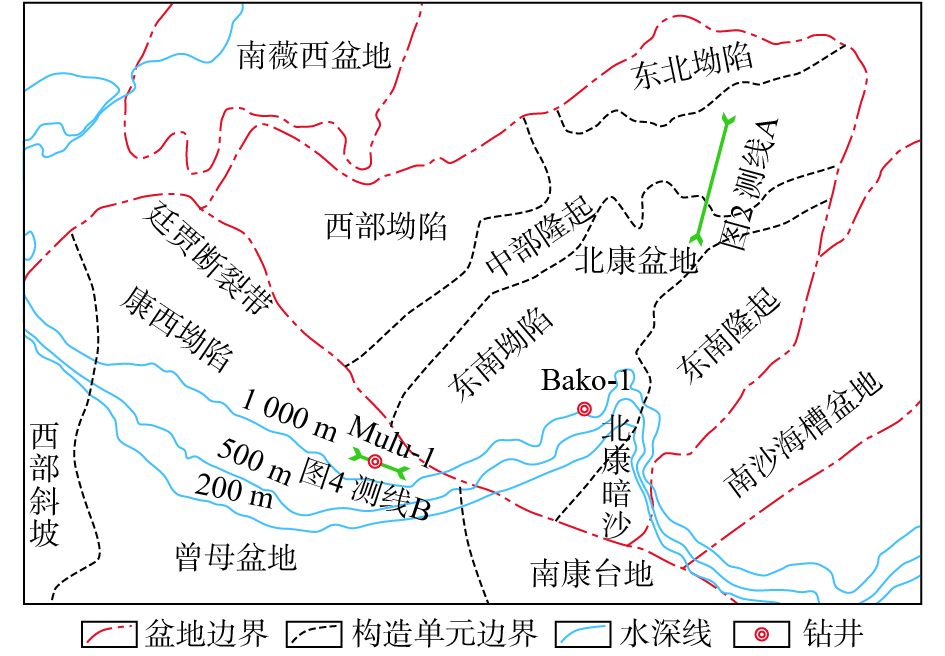
 下载:
下载:
